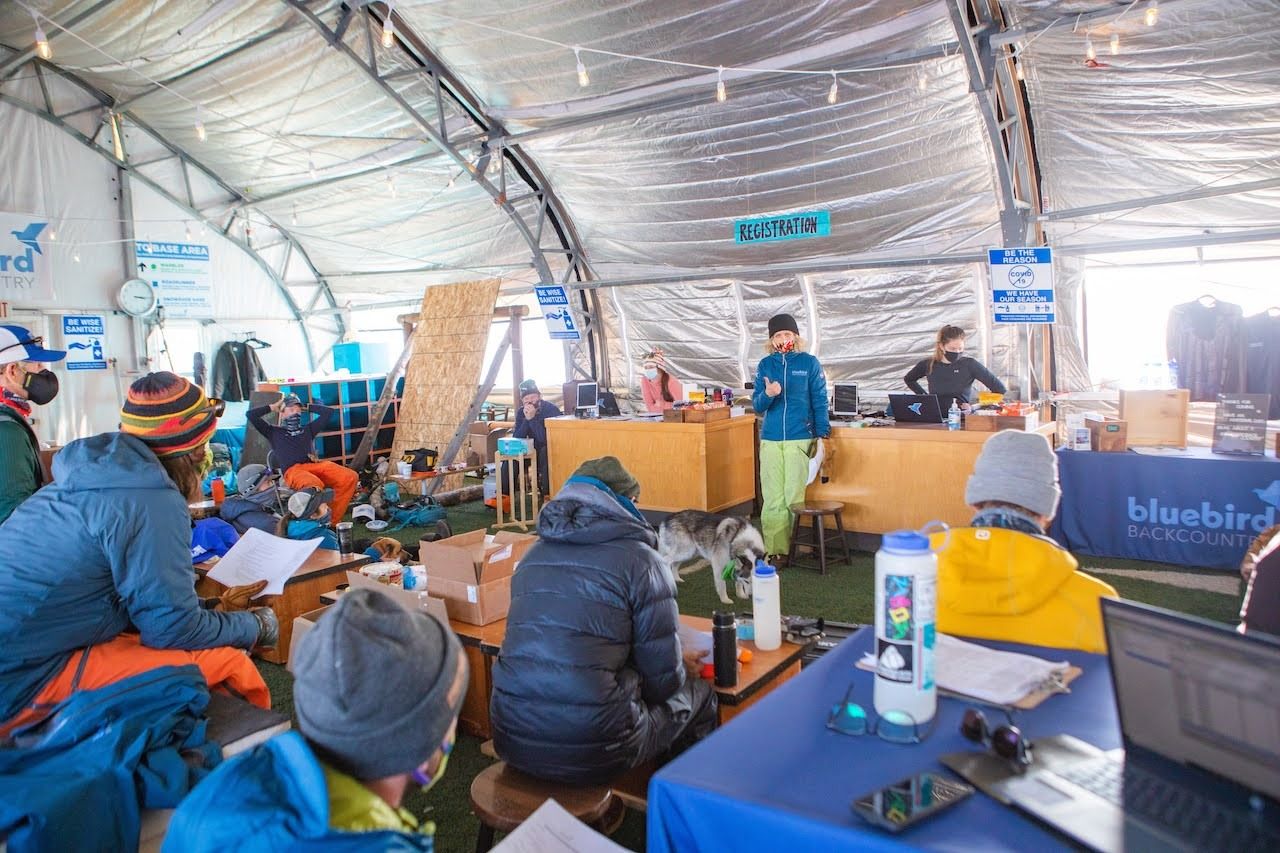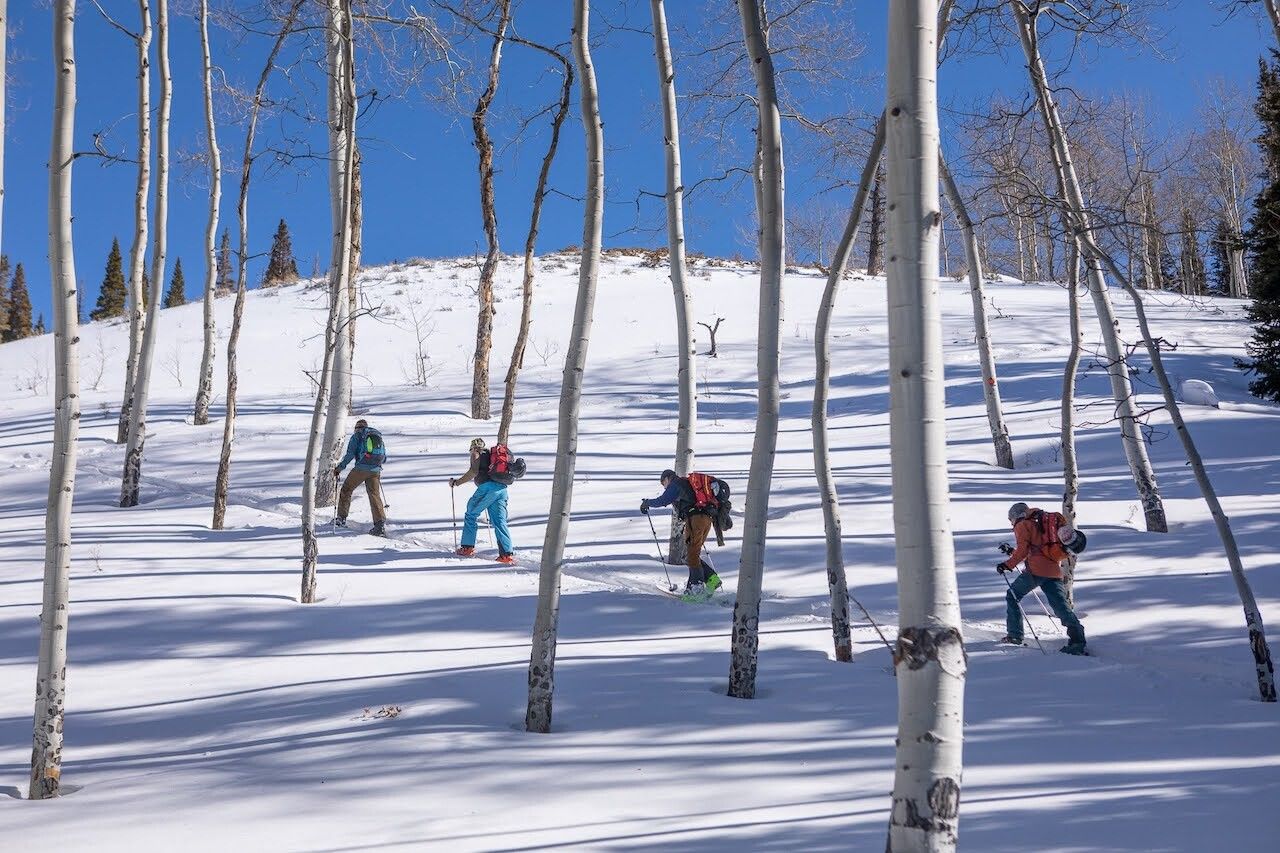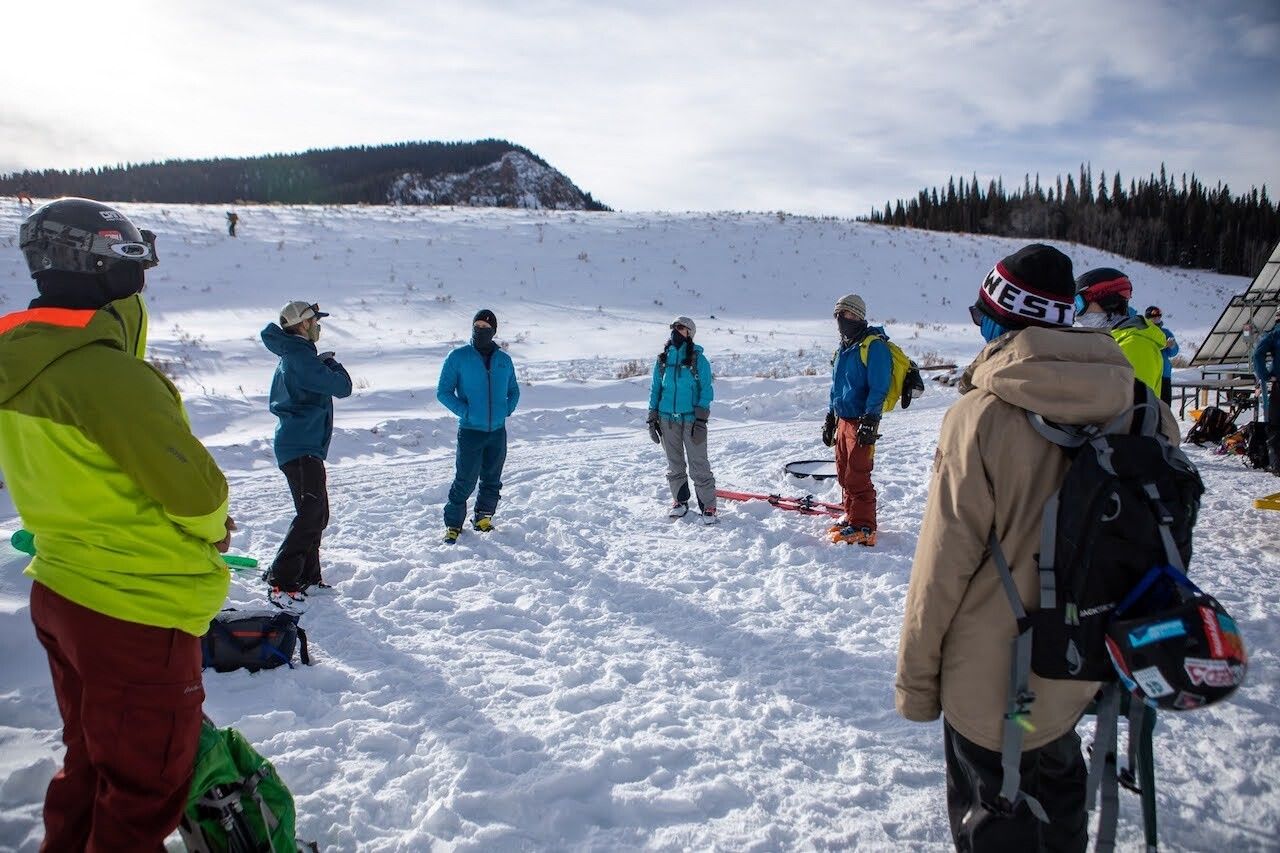“The depth hoar happens worst on the north-facing slopes,” Lucas Mouttet, Avalanche Program Director at Bluebird Backcountry, explained to a group of five students gathered for a Level 1 avalanche course in the snowy mountains of northern Colorado. “It also happens on the east face because there’s near-total shading, and then when it does heat, it facets.”

Colorado’s Newest Ski Resort Was Made to Get You Backcountry Skiing
The avalanche training course, taught on site at Colorado’s newest ski area through a curriculum developed by the American Institute for Avalanche Research and Education (AIARE), provides basic risk assessment and travel planning skills to backcountry skiers and snowboarders venturing off-piste in the mountains. Technical terms like “faceting” and “depth hoar” are used on repeat in these courses, terms that — when properly understood — give backcountry users a basic understanding of when a slope is prone to slide, and why. (Hoar is a frost layer that can facet, or weaken, when the temperature warms.)
This is critical knowledge. Backcountry skiers are heading out this season in record numbers, a result of the COVID-19 pandemic’s impact on ski resorts and also due to the increasing prevalence of films, magazines, and social media posts documenting high-profile riders like Jeremy Jones, Elena Hight, and Chris Davenport ripping wide-open lines and tight couloirs on big, rugged peaks.
With no lifts, 1,200 acres of hike-to terrain, an additional 3,000 acres of guided-only “deep backcountry,” and a ski patrol dedicated to keeping both the terrain and the skiers safe, Bluebird Backcountry is the perfect segue from resort skiing to backcountry.
A ski area designed to educate and inform

Photo: Justin Wilhelm
Bluebird Backcountry, which is in its first full season operating at Colorado’s Bear Mountain outside the town of Kremmling, has deftly packaged the backcountry experience to make it more approachable and accessible to skiers and riders of all levels. In addition to established uphill routes known as “skin tracks” and a mapped system of gladed runs and bowls to ski down, Bluebird offers an extensive schedule of backcountry education classes and guided ski options to help beginner backcountry users transition from on-piste to off, and experienced users take that next step to riding bigger terrain, safely.
“Bluebird is unlike any other ski experience,” Co-founder Erik Lambert told Matador. “It feels different than a downhill area, nordic center, or traveling in the true backcountry — you kind of need to experience the vibe in person to understand.”
Bluebird offers both guided and unguided skiing and snowboarding with one big caveat: There are no lifts and no “cut” runs. The base camp area offers a solar-powered rental and welcome tent, seating areas warmed by fire pits, and a food truck that slings s’mores and beverages to toast after a long day. Beyond that, it’s full-on backcountry with few — if any — others around beyond your immediate crew.
“Bluebird is designed as a friendly and welcoming place for skiers of every ability and backcountry-experience level,” Lambert said. “Part of our mission is to make the backcountry more accessible to anyone who is curious and interested in learning … [W]e have plenty of slopes for guests of any experience level, including beginners, both uphill and downhill — skin tracks range from 200 to 1,200+ vertical feet, and downhill ratings span from green to extreme.”
The terrain is open Thursday through Monday, late December through late March. Those without their own gear setup can rent everything needed to ski in the backcountry, including avalanche gear such as a beacon, shovel, and probe.
Once equipped with gear, a staff member scans a skier’s day pass, which logs that the skier is leaving the base area and heading out onto the terrain. The skier then skins — that is, treks with “skins” on the base of their skis to prevent backward sliding — through an access gate that’s aptly labeled the “Mountain Portal.” From there, they select the trail they want to skin up and proceed on their way. Upon returning to the base area, staff scans the day pass again, marking the skier as safely returned; that way, no one is left unaccounted for at the end of the day. If a skier wishes to head back out for another run after returning to base camp, she simply needs to have staff scan her back out.
Terrain varies from beginner-level runs on Meat Hill, accessible in about 20 minutes of moderately strenuous ski touring, to expert chutes and steep runs accessed by a steep uphill skin on the Wapiti Way and Elkhide uptracks. Intermediate terrain is accessible on West Bowl, an open bowl with scattered trees, and the gladed Lost in the Woodwards, both about a 45-minute hike from basecamp. The big difference between here and other ski areas is that for each run you take, you must “earn your turns” by skinning to the top of it. A five-run day — easy when taking a lift to the top — is a rewarding but exhausting excursion at Bluebird.
Bluebird fills a big gap in Colorado’s ski industry

Photo: Justin Wilhelm
Bluebird is a welcome respite from the crowds of skiers along Colorado’s I-70 corridor. A busy day here sees 100 people on the slopes. Even with precautions, however, backcountry touring always poses a certain level of risk. Proper risk evaluation includes pulling the plug when something seems risky. Understanding this, according to Lambert, is a primary focus of Bluebird Backcountry.
“We evaluate and manage the snow similarly to ski patrol at any other ski area, and we offer the same reasonable expectation of safety to our guests,” Lambert said. “Our patrol team is intimately familiar with the terrain. We’re also conservative in our decisions to open and close terrain to ensure everyone has a great day out there.”
Bluebird offers three levels of backcountry education classes, recommended for entry-level users even before they sign up for formal avalanche safety training. Above those three levels, skiers can pursue official avalanche education courses like the class Mouttet was teaching in early February, through AIARE. Courses offered include both Levels 1 and 2 and the rescue drills course, meant to be taken between the two levels and on an ongoing basis as a means of keeping backcountry rescue skills fresh.
“We think of ourselves as an educational center, community hub, and a return to the roots of the ski industry, which has been a really fun combination for our guests,” Lambert said. “As more and more people choose to avoid crowds and seek solace in the backcountry, we offer a fun and relatively low-risk place to get started, evolve your education, explore a beautiful area, and generally have a blast on the slopes in a totally alternative way.”
How to plan a trip to Bluebird Backcountry

Photo: Justin Wilhelm
Bluebird also allows skiers and riders to sign up to “ski with a mentor,” which pairs them with a pro guide for the day for an educational touring experience. While Bear Mountain, West Bowl, and Meat Hill offer 1,200 acres of terrain, those who ski with a guide or sign up for an AIARE education course can access an additional 3,000 acres on the adjacent Diamond Mountain.
The first thing you’ll notice upon arriving and interfacing with the staff at basecamp is the humble, approachable attitude that should always be present in the backcountry. The ski area’s staff are avid backcountry skiers themselves, quick to offer tips on where to find the day’s best conditions or what the weather’s like at the peak. They’re also not shy about noting areas where conditions aren’t prime or that are closed for the day due to heightened risk.
If you plan to come, purchase a day pass ($50) online in advance. If it’s your first time, or if you’re coming alone, your best bet is to hire a guide to lead you to prime turns and the best snow. Remember that even though you’re at a designated ski area, big-mountain skiing always poses inherent risks. Skiing alone is not recommended.
Lodging is available in nearby Kremmling or Steamboat Springs, both within an hour’s drive of the ski area. You can also reserve a campsite at Bluebird and stay overnight in your RV or winterized van if you’re prepared with heating equipment and proper gear.